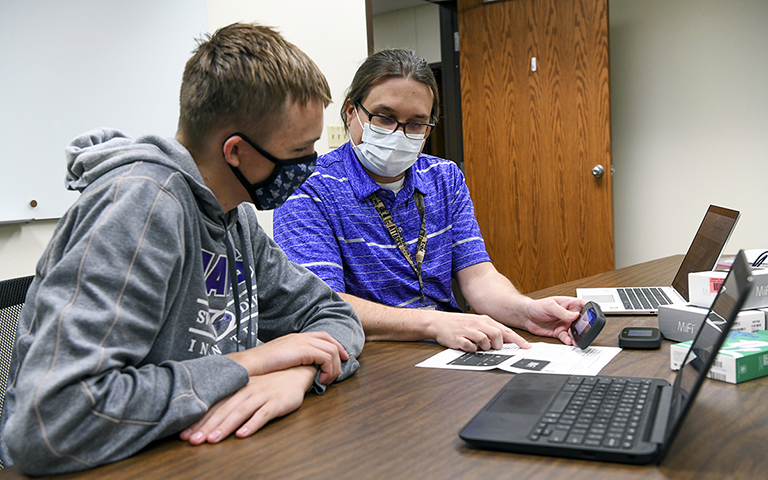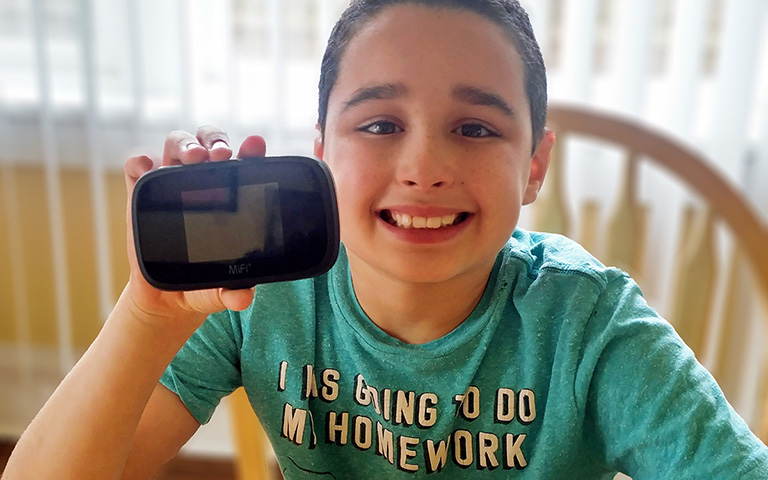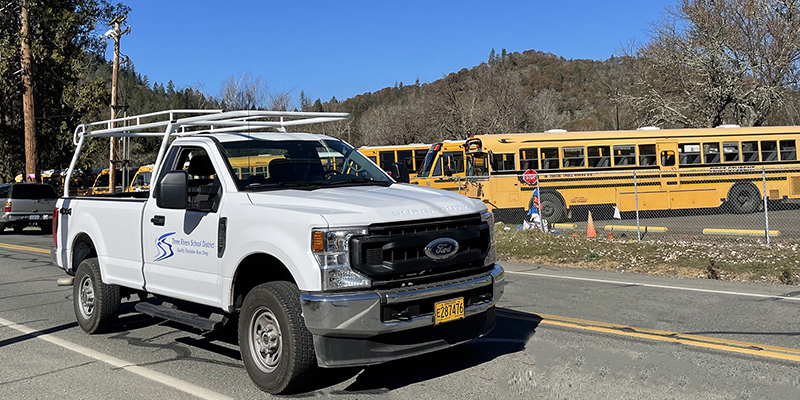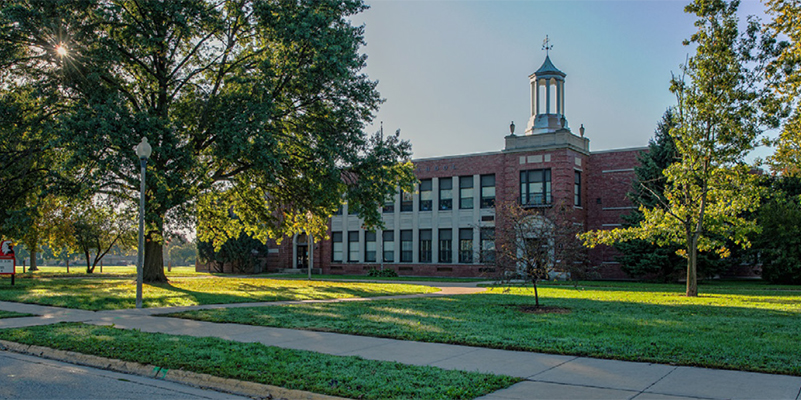READ THE FULL STORY
How can your organization duplicate these incredible results?
Get details on how Kenosha School District:
- accomplished its goals
- saved thousands of dollars
- reinvested in education by partnering with UScellular for wireless solutions.
The 3rd-largest district in Wisconsin, with 20,000 students, KUSD had for several years been investing in training through technology and was already a “1:1” district with one assigned or committed device (such as a tablet or laptop) per student. In fact, KUSD was only a year or so away from implementing some remote learning scenarios when COVID forced their hands, according to Kristopher Keckler, chief information officer for KUSD. But with an estimated 16% of students in the district lacking reliable or readily available broadband internet in their homes, the district suddenly had to find a way to ensure every child was connected.
The Big Unknown
On March 13, the district imposed stay-at-home orders, leaving Keckler and his team in “the big unknown.” They immediately began talks with fellow Wisconsin school districts and the governor (a former state superintendent) to determine next steps. “Like every other district, we worked to decide what we wanted to offer—we still needed to provide some educational services, and we scrambled to hand out over the next several weeks about 8,000 devices,” he said. “The goal was to get us through the rest of the year if we could.”
Creating a Plan to Implement Hotspots
Through March and April, at a time when districts nationwide were procuring hotspots to support the broadband initiative, KUSD was careful to first assess the number of families without internet, determine their needs and plan a solution that provided the greatest impact. “In any crisis situation you gather information to try to make informed decisions,” said Keckler.
As they gathered information on the severity of the situation, Keckler said he and his colleagues debated how to reach every child and ensure they were providing quality education. The school board reviewed many products and options before choosing hotspots.
In May, Keckler presented a plan to the school board that projected a need for 2,000-3,000 hotspots. They utilized initial COVID relief funds targeted to support these efforts and sent an RFP to vendors.
“The UScellular® team went above and beyond to get us those hotspots…they could have put them on a FedEx truck, but they didn’t. Somebody put them in their car and drove here, so we’d have them a day or two earlier.”
— Kristopher Keckler, Chief Information Officer for Kenosha Unified School District, Kenosha, Wisconsin
Sticking with a Trusted Partner
The KUSD performed speed tests in various types of home and office environments, taking into consideration updated firmware needs and how students might take care of their device—i.e. submerging it in water, stepping on it, etc.—and chose the UScellular 24-month unlimited data plan using global LTE mobile hotspots.
The district had already been using UScellular® for 250 wireless lines for staff and fleet services and had confidence in the network. “Cost was a factor, but it was not the only factor. Having a partnership already existing with UScellular….we knew the support would be good,” Keckler said.

Local On-Site Support for Easy Implementation But configuring thousands of hotspots was a tall order. Knowing that the KUSD did not have the bandwidth internally, UScellular sent staff on site to unbox devices, configure them and get them up and running to enable an on-time launch.
UScellular Also Went the Extra Step by:
- Implementing a request form that parents used to obtain a hotspot as well as understand the liability associated with it
- Making sure they had the appropriate filtering tied to the devices
- Pairing hotspots through the MAC address of the assigned device to prevent the parent or child from hooking it up to a smart TV
- Developing a custom config file that they installed on devices
“There were piles of boxes all over the halls…they all had to be opened, they all had to have an asset tag so our frontline technicians just had to scan the bar code and assign the hotspot. UScellular was a great asset,” Keckler said. “We wanted to make sure devices were assigned appropriately and the UScellular team was awesome. They came down on site several times to help with the prep work.
“Everyone says things that they believe you want to hear—we’ll be there to support you, or when this happens, all you have to do is call this number and we’ll look at options, and if other problems arise, we want to hear about it.” Keckler said. “Not everyone has that follow through, but UScellular has not only meant what they said but has gone above and beyond…with near-immediate responsiveness.”
As class restarted in the Fall, with 50% of students choosing to learn remotely, the district realized they would need even more hotspots at a time when nationally, districts were competing to locate available hotspots and other devices. But UScellular checked in with them weekly and had already allocated inventory; whether the district ordered 15 or 150, the devices were delivered in a day.
“The UScellular team went above and beyond to get us those hotspots…they could have put them on a Fed Ex truck, but they didn’t. Somebody put them in their car and drove them here so we’d have them a day or two earlier,” Keckler said.
Using Data to Make the Most of Valuable Resources
As part of its execution and ongoing support for 3,000 hotspots, UScellular® provides KUSD with detailed monthly usage reports that enable the district to identify hotspots sitting unused so they can reallocate them to others who need it. The company also developed guides the district has shared with parents to increase usability.
“I love data, analyzing it to try to make better decisions and being as efficient as possible, so we take those data reports and correlate them with the hotspots assigned through our asset management system and that way I’ve got several months of data usage,” Keckler said.
Right now, he says the district is averaging 92% regular usage of hotspots, which has closed the gap by 8% of the district previously without internet access. As a result of this project, Keckler accomplished his goals and ensured every student now has reliable internet and access to online learning.

Eliminating the Digital Divide
Keckler also said his goal was to ensure a solution that was equitable to all students. “It’s nothing unknown, nothing new, that there’s a digital divide—the haves and have-nots of families who have access to readily accessible quality access to the internet.”
He said the majority of the district’s instructional resources are online textbooks. Knowing that if they truly wanted to meet the professional mandate that every child be provided a quality education, part of that equity is knowing that a certain portion of the population needs additional assistance.
“UScellular has supported us every step of the way in meeting our goals,” Keckler said.











